| Picture of the month | Historical overlook | Stone types | Picture gallery | ||
| Videos | Links | Downloadables | News, Offers | ||
| Contact | Administration | Anker Software | |||
| Visitors this month:426 | |||||
  | Picture of the month2024 10 Metal accessories - 4.The final chapter of the bridge improvements will be on the agenda this month. Based on the experience of the two previous bridge series, an innovation has been introduced that included bridges with sliding elements only. These look aesthetically inferior in my view, although this is a matter of judgment. The assembly is really much simpler than in the version using bolts. 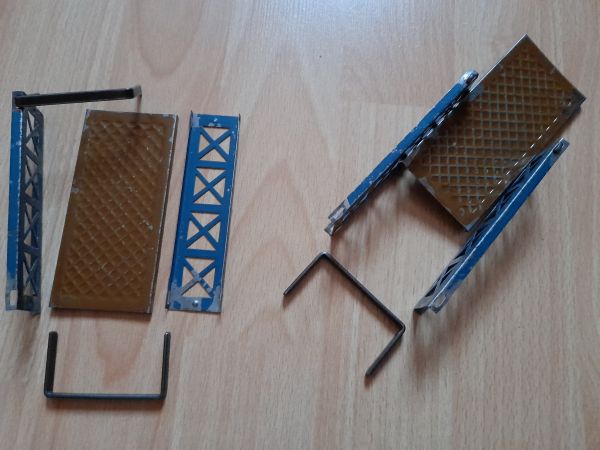 Larger bridge elements were designed also, thus the larger structures with bigger metal accessories looked nicer. 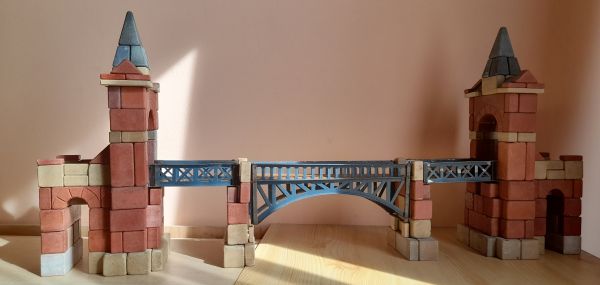 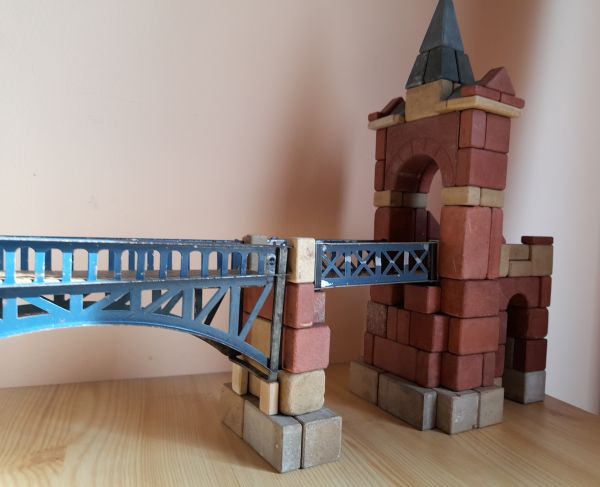  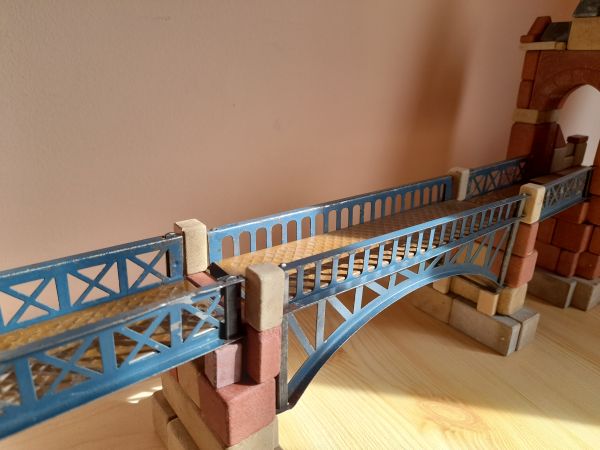 The roof system was also reformed. Metal panels placed at 45 degrees were found to be ugly. In their place, a layer of stone was placed on a 45-degree metal plate. This solution wouldn't have been so bad if, by some perverse genius, the square cover sheets hadn't been laid on their corners. In this arrangement, the stones on the bottom stand still, but the ones above them start to slide sideways at the slightest pressure.  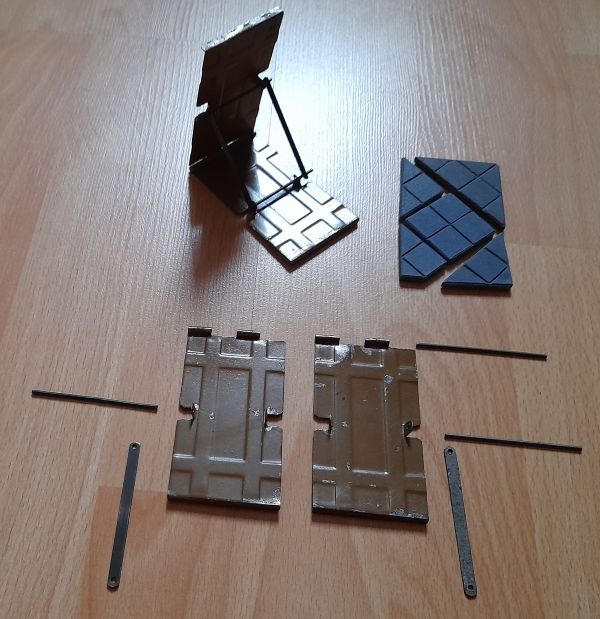 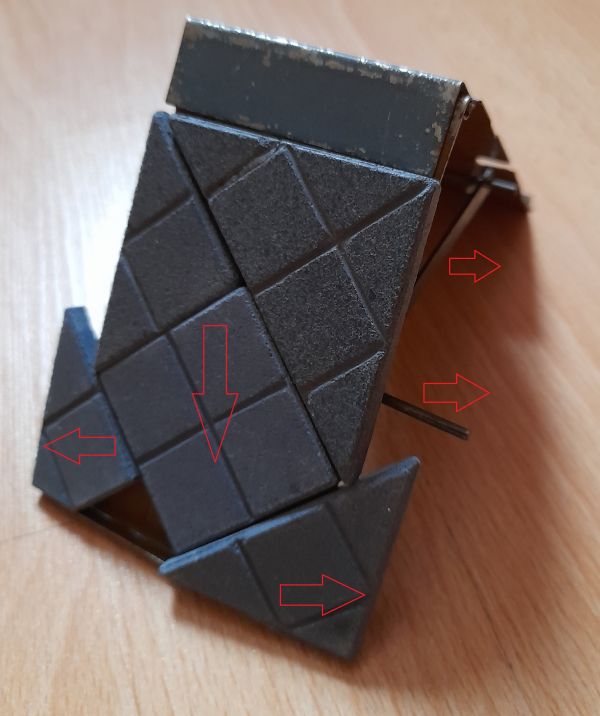 In one type of element, at least one side has a folded side to hold the stones in place. This "railing" holds the roof tiles that are about to slide off nicely, but you can't put more metal sheets like this side by side because larger roof surfaces are clad with roof tiles that cross over the metal sheets’ borders. The pattern of the tiles lying on their corners is diagonal, so that elements with different pattern are needed at the edge of the roof surface. Thus, the whole roofing layer has been made unnecessarily complicated. This was made even better later by having one side of the roof tiles brick red and the other slate blue. Thus, the requirements for the shape and pattern of the pieces needed on the edges result in even more stones needed because of the two different colours. The box shown is mixed: the DS7 has single-colour roof tiles, but the 7A is a complementary with two-colour tiles. This is of course not visible on the bridge structure. 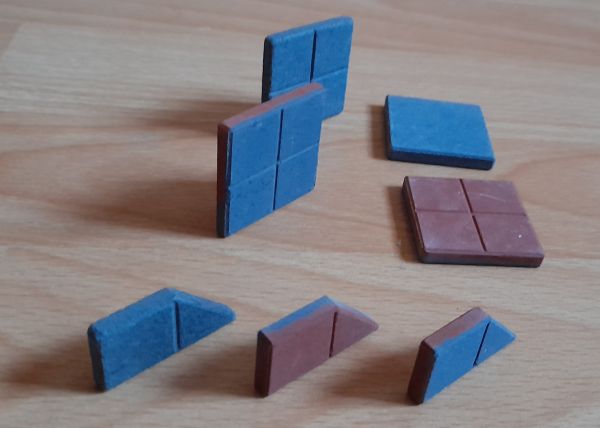 The newer roof solution proposal does not eliminate the stability problem of the superstructure in the same way as the metal sheet roofs of the second bridge series. In the case of those, the supporting gantry-like frame wobbles, and there is no longer a foot for the roof structure of this type. The two metal plates on opposite sides are held together by a cross strap. This cross-strap, in turn, is held in place by metal rods that have no screws at the ends and are not bent. So the whole structure is held together only by hope, while serious weight of stones are placed on top of them, set on their corners. The last problem with the renewed roof structure is also old-new. Seen from the side, the tent roof is empty. This has been solved in the same way as in the previous version. There are walls to the right and left of the roof. These stone walls have no structural connection with the metal roof structure. The roof itself often sways in the absence of a supporting leg, and even the stones on the roof slide off, pushing the pitched walls sideways. I don't build with tools and I very rarely use tape. I've built enough to do trickier tasks. However, if a roof slips under my hand several times and everything falls off, I'll reach for the duct tape to preserve the kit. I tend to use the kind used by carpenters, which is only very slightly sticky, thin, and leaves no marks on the tiles. The solution is very artificial, and it doesn't give the building experience at all like traditional sets. The DS sets shown here had the same problem as the earlier second bridge series, in that the structures in the building plans were either long bridges or large houses with magnificent roofs. As a result, either the roof elements were left in the box at the end of construction, or the bridges were. It results from the nature of the buildings that it is very rare to find large houses structurally built on or adjacent to large bridges. It may be suggested that the development (like other ideas using metal elements) was Richter's own contribution to the renewal of the building blocks. After his death in 1910, development of the series slowed down abruptly. Those around him probably realized that this addition would not bring happiness to builders either. Next month, I will show one final roof upgrade that used wood panels. The Country Houses series has not been a real breakthrough success either. |   |